Channel Crossing Tracker
Illegal Maritime Arrivals From Safe Countries
Since 2018, illegal immigrants (many of whom make a claim for asylum) have been attempting to enter the United Kingdom by crossing the English Channel in small boats, often using inflatable dinghies.https://datawrapper.dwcdn.net/8zSS2/1/
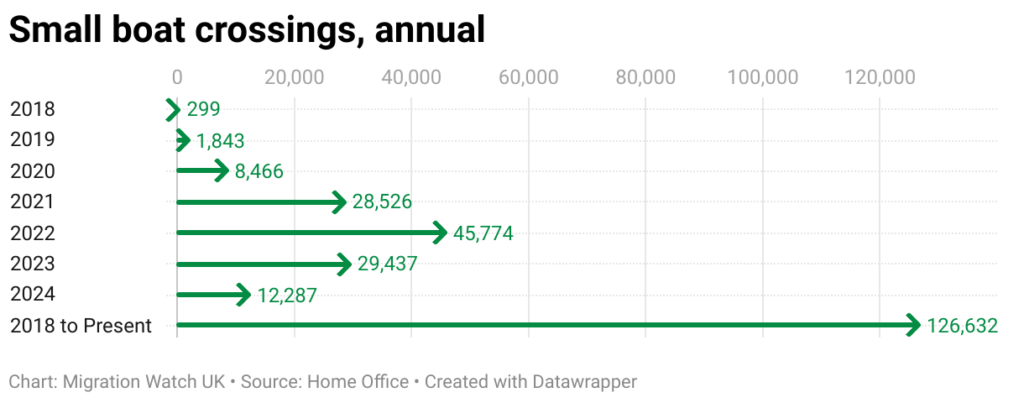
How many people are illegally crossing the Channel?
At the beginning of 2023, the Home Office forecast that crossings could reach 85,000. Such a huge number of crossings would be roughly equivalent to the total arrivals by small boat from 2018 to the end of 2022. Added to the current total, this upper forecast would equate all small boat arrivals to the population of the City of Oxford.
Since then, thanks to a sharp reduction in the arrivals of Albanian migrants (due to a new returns deal) and occasionally poor weather, overall arrivals have fallen and by the end of the year are likely to sit around 30,000. A notable reduction from 2022, but still very high.
What’s the cost?
This has placed such a burden on the asylum system, that asylum seekers are often having to be accommodated in hotels because local authorities do not have any social housing capacity to spare. In 2022, it emerged that the cost of housing asylum seekers in hotels has risen to £5.6 million a day (plus a further £1.2 million for Afghan evacuees). This is equivalent to the cost of 73,000 basic visits to an Accident and Emergency unit. https://datawrapper.dwcdn.net/3I4T9/3/
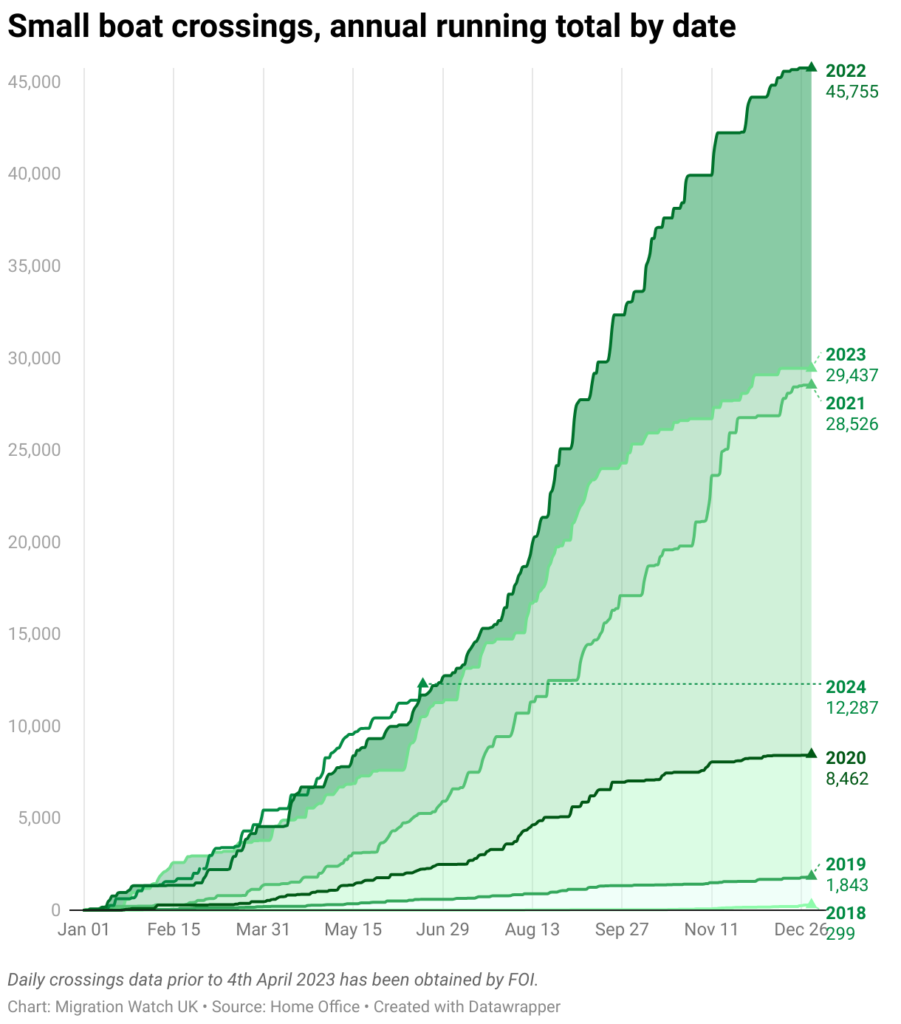
To view the monthly totals chart which the above chart has replaced (and which remains updated), click here.
When is the peak crossing season?
Typically, the Channel crossings begin in earnest around May. Before this point, variable weather conditions make it difficult to gauge how high crossings are in a particular year.
However, late summer when calmer weather prevails has usually brought a major influx of arrivals which, in 2022, saw 8,641 people cross the Channel in a single month. On several days in the past two years, crossings have exceeded 1,000. The all-time high so far was 1,295 on the 22nd of August 2022. Consistent crossings at half that level for just four months would equal as many as 77,000.
What happens when they arrive?
As people attempt to cross the Channel, they are often escorted through French waters by French border patrol vessels before afterwards being intercepted by Border Force, Royal Navy or RNLI vessels. It is common for the small boats to lack sufficient fuel to reach the UK, making rescue by other ships necessary.
Uncontrolled landings, wherein a small boat makes it to the UK without being intercepted are rare due to increased observation efforts, but on occasion a boat may slip through the net. In one example, an illegal Albanian immigrant ran into a woman’s house and demanded to use her phone.https://datawrapper.dwcdn.net/HVYhc/2/
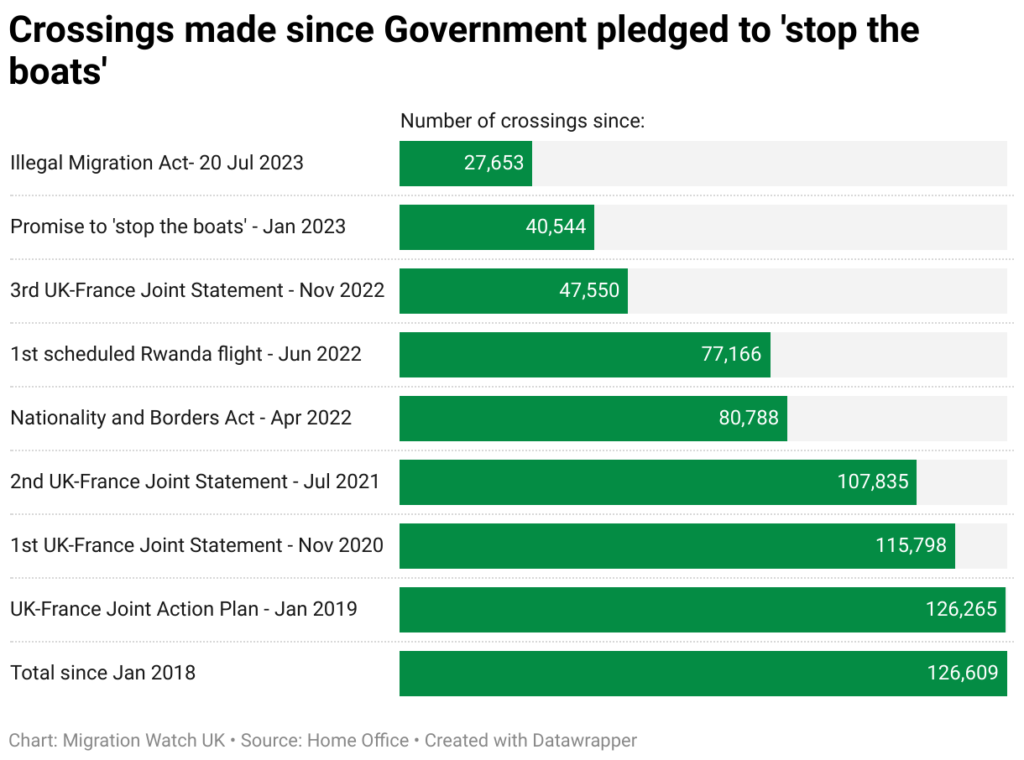
How successful have attempts to ‘stop the boats’ been?
‘Since a ‘major incident’ was declared in late 2018, there have been repeated pledges and promises aimed at stopping the Channel crossings. These have varied from various joint plans and statements by the British and French governments that they were ‘determined to stop’ Channel crossings, that they would roll out ‘cutting-edge surveillance’, ‘build on their existing cooperation’ and ‘undertake significant and innovative action’ to ‘eliminate the small boats phenomenon’ and make the route ‘unviable’. Such plans have included planes, drones, jet-skis, beach buggies and even small warships.
What’s more, in 2022 the UK enacted the Nationality and Borders Act and in 2023 the Illegal Migration Bill. At the time of writing, despite some potential success in curtailing small boat crossings by Albanians, the trend has nevertheless continued unabated. Whether the Illegal Migration Bill and accompanying measures will at last be the key to the problem remains to be seen.https://datawrapper.dwcdn.net/35qA7/1/
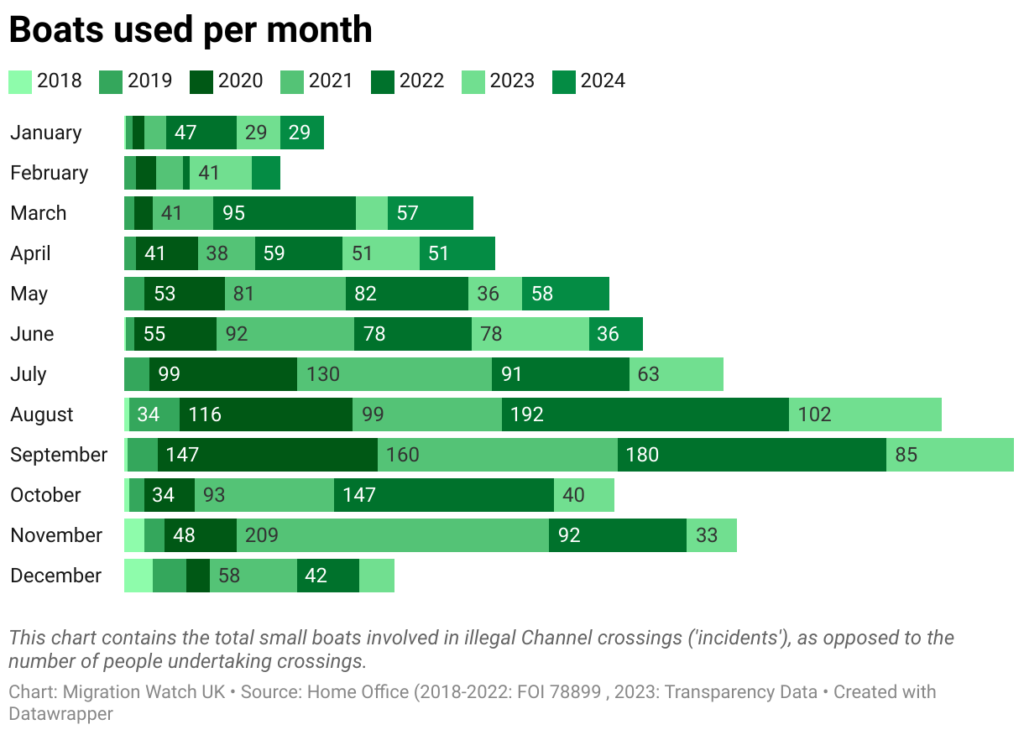
How does claiming asylum work?
In 2022, around 90 per cent of those entering the UK via this unauthorised route claimed asylum. They tend to be served papers for their entry, then may be held for a few days in detention (and given a mobile phone) and are then bailed into tax-payer funded accommodation into the community while their asylum claim is considered.
This despite people not being able to be identified or vetted properly for security reasons due to having usually deliberately destroyed their documentation. Despite laws in place to penalise this, the government increasingly refuses to use them (see our blog).
Overall, asylum-related removals (ie of those whose claims were rejected or whose application was deemed fit to be processed in another country) plummeted from 18,000 in 2005 to just over 1,100 in the year to June 2021. These figures includes all asylum claimants, not just those who entered the UK after traveling here in boats.https://datawrapper.dwcdn.net/wsmT1/1/
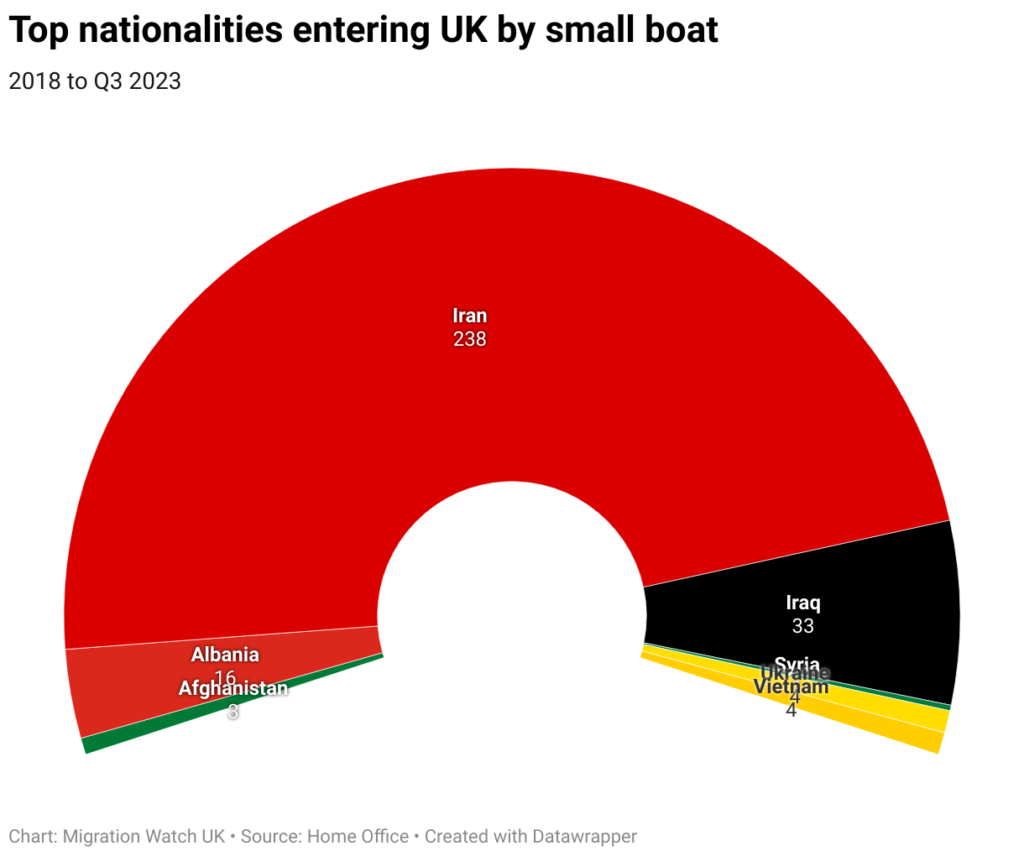
Where do they come from?
The people undertaking Channel crossings come from a wide range of countries. Overall, Iranians have made crossings most consistently, and made up a majority of those crossing the Channel in 2018 and 2019, supplemented by large contingents of Iraqis. In 2022, the number of Albanians entering by small boat increased by 1409% on the previous year resulting in a rapid increase in crossings and government action to deter them in future. So far in 2023, the number of Albanians has fallen significantly, but has to a degree been made up for by large numbers of Indians, who in previous years had rarely entered the UK by small boat.
How many get returned to their home country or elsewhere?
Due to an asylum backlog exceeding 100,000 cases, many of those to arrive by boat have yet to receive a conclusion to their asylum claim. However, of the 20,605 people who were identified for consideration as inadmissible, just 21 were actually removed from the country. https://datawrapper.dwcdn.net/Z6ibJ/13/ https://datawrapper.dwcdn.net/QVN6d/2/
To access the old Channel Tracker, which is no longer updated. The above charts and table are using official government data. To view the most recent data. To view, past data published by the Ministry of Defence, click here. To view overall irregular migration statistics, click here. Preliminary nationalities data for 2023 can be viewed here.

